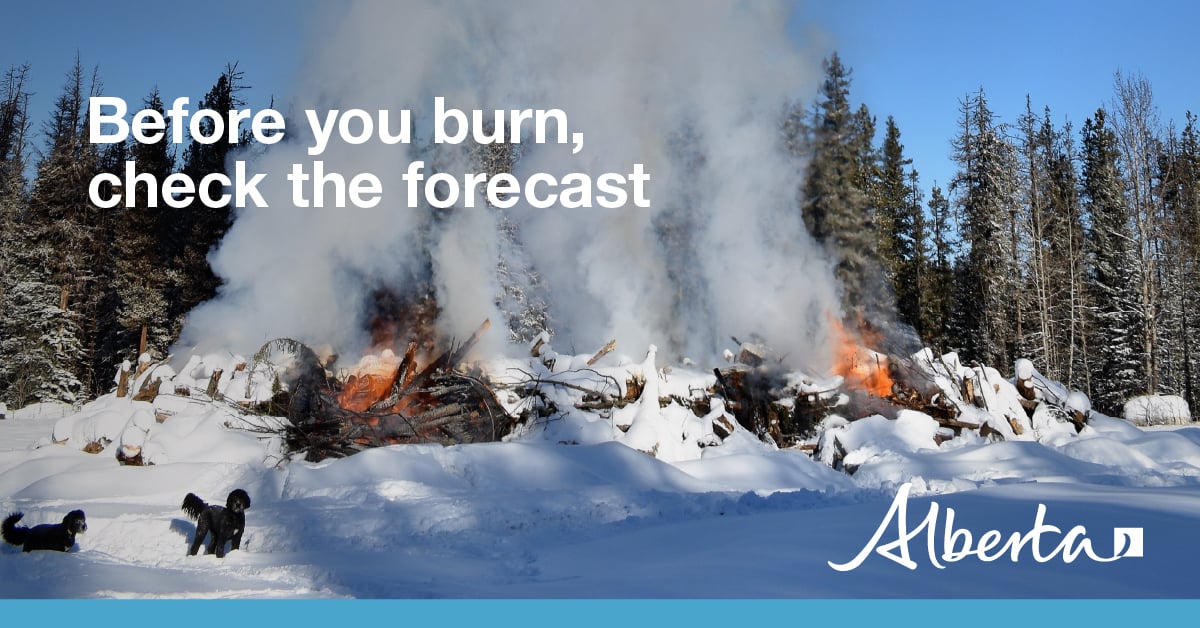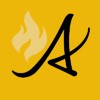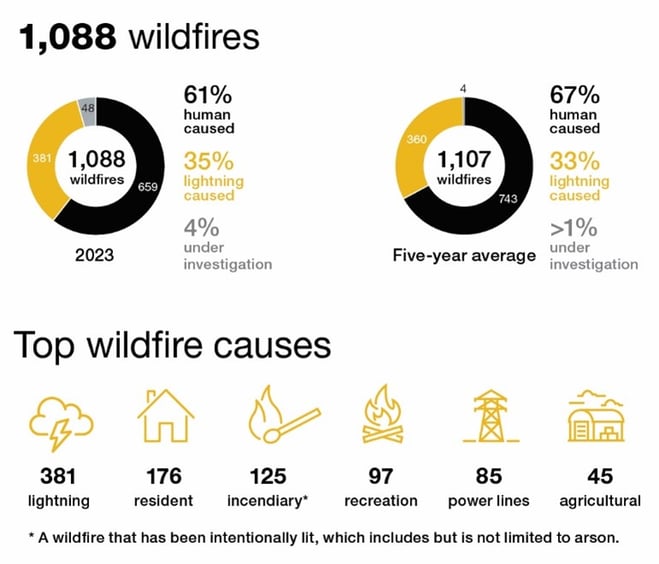A big stand out during the 2023 wildfire season was the impact of wildfires caused by lightning. They represented 35 per cent of wildfires but accounted for 1,750,867 of hectares burned, almost 80 per cent of the total burned this season.
Many of the large lightning caused wildfires are still burning. Dry, warm and windy conditions can cause wildfires to flare up and become active, no matter the time of year.Use caution when lighting fires and doing burn projects this winter. A holdover fire can occur due to the extremely dry conditions of the ground. Firefighters continue to respond to wildfires in the winter.
If you see smoke or flames; or detect hotspots and ground fire in a forested area, report it by calling 310-FIRE (3473).
Are you interested in joining the Alberta Wildfire team this summer? We hire a variety of positions, and a number of these positions are now available to apply on. Check out our website to learn more!
https://www.alberta.ca/alberta-wildfire-recruitment
Download the Alberta Wildfire app today and get access to real-time information on wildfires in your area. You can also find information on reporting wildfire, fire bans and fire updates across the province and much more all on your mobile device.
Available for Apple and Android.

- Refrain from burning when an inversion is in place or is forecasted.
- Consult local municipalities and authorities on how to mitigate impacts when undertaking larger winter burning projects near communities or road ways.
- Actively manage burn projects to reduce disposal time and smoke impacts.
- Burning debris in stages will allow you to adapt to changing weather conditions and reduce smoke.
- Monitor weather conditions: lower temperatures and lighter wind speeds can result in stronger inversions.
- Winter burns should be conducted in areas with sufficient snow cover and must be monitored the entire time.
- Ensure smoke warning signs are in place before burning within half a mile (800 m) from a roadway. For more information on smoke management and to acquire signs, contact your local municipality. If you are outside of a municipality, contact Alberta Transportation.
- Read over the Recommended Practices for placement and instruction of a “Smoke Ahead” sign.
While burning:
- Have someone monitoring the burn the entire time – if it escapes, immediately report it to 310-FIRE (3473).
- Only burn what you can control with the equipment and people you have available, and adjust your burning according to weather conditions.
- Brush piles or debris windrows should be free of soil, built to a maximum height of 3 metres, and with a fireguard or cleared land around it to stop the spread of fire.
After you burn:
- Spread remaining material within the pile and soak with water as required.
- Check the area and ensure both heat and smoke are no longer being produced by the pile – it should be cool to the touch.
- Check your burn site multiple times in the following weeks to ensure it has not reignited.
Reduce smoke:
While winter is a safer time for burning due to reduced wildfire danger, it's still essential to take necessary precautions, such as monitoring the weather to prevent smoke from adversely affecting surrounding areas.
On particularly cold winter days, inversions and other weather factors can cause smoke from a winter burn to stay close to the ground and travel great distances. An inversion happens when cold air is trapped near the ground by a layer of warmer air above it. Inversions can cause dangerous driving conditions and impact nearby communities.
For more information contact:
Kelly Burke | Wildfire Information Officer
(780) 832-7235
- Alberta Wildfire
- Alberta Fire Bans
- FireSmart in Alberta
- Alberta Emergency Alerts
- Air Quality Health Index
- Wildfire Smoke and Your Health
- 511 Road Reports
- Emergency Preparation
Subscribe to the Grande Prairie Forest Area wildfire update to receive an email when new information is posted.
Phone: 1-866-394-3473


.jpg?width=659&height=853&name=Seasonal-employment-8.5X11-poster%20(002).jpg)


